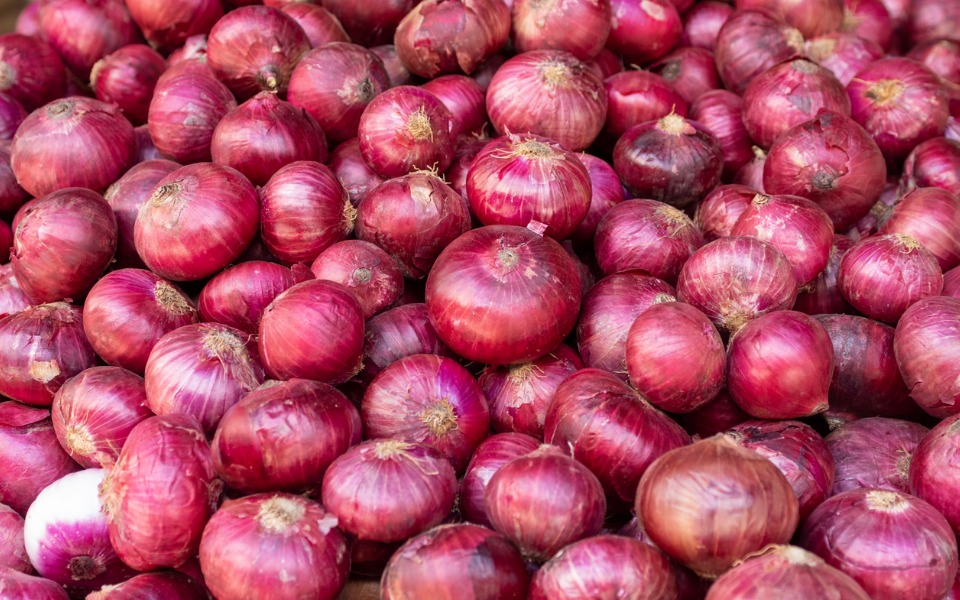
Countries across three continents reeling under onion crisis, high prices

Onion prices are making people weep the world over. While prices of the vegetable (along with potato) have crashed in India, putting farmers in distress, neighbouring Pakistan and at least nine other countries across Asia, Europe, and Africa are reeling under excessively high prices, thanks to the war in Ukraine and extreme weather events.
Some of the other countries that have been experiencing high onion prices are the Philippines, Ukraine, Turkey, Kazakhstan, Uzbekistan, Tajikistan, Azerbaijan, Morocco, and Austria, making it a symbol of the global food crisis. In the Philippines, onion prices are reportedly higher than that of meat, prompting people to compare the root vegetable to gold. And, experts say the worst is yet to come.
The Philippines case
The trouble started last year with the Russia-Ukraine War, which recently completed a year. First, wheat and other grains became costlier. Now, those prices have come down, but the global vegetable market has been affected. Media reports say the cost of onions has quadrupled over the past four months.
The prices of red onions, which are added to almost all Philippine dishes, reportedly saw a ten-fold rise in eight months, going up from 70 pesos (Rs 105.18) a kilo in April 2022 to 700 pesos (Rs 3512) in December, says a Reuters report. The prices have fallen since then, currently costing around 550 pesos (Rs 2,476) per kg, according to the country’s agriculture department. Chicken is three times cheaper and beef, by 25 per cent.
Also read: Will procure onions from you, Punjab CM Mann tells Gujarat farmers
The Ukraine was is not the only factor. Super Typhoon Karding/Noru in September 2022, followed by Typhoon Paeng/Nalgae in October, destroyed crops worth billions of pesos. That, coupled with global food, fuel, and fertiliser crises, pushed up the country’s inflation rate to 8.1% in December — a 14-year high. Local media reports say hoarding of onions by a syndicate may be making matters worse. The situation came to such a pass that onions were being smuggled into the country.
After protests, the Philippines decided to import onions but since the harvest season (February to April) has already begun, it is being seen as a temporary solution.
Frost in central Asia
The Philippines is not alone. Weather has played spoilsport in parts of Europe, Africa, and central and western Asia. Frost destroyed huge stocks of onions in Kazakhstan, Uzbekistan, Tajikistan, and Kyrgyzstan. Fearing a shortage in the domestic market, these countries have banned onion exports.
In Pakistan, the floods last year destroyed a huge chunk of the crop, after which the country, which normally exports onions, had to import it from Iran, Uzbekistan, and Turkey. Now, Turkey restricted the export of potatoes and onions after two consecutive floods in November and December last year affected the crops. Now, prices have further skyrocketed in the country that is grappling with a deadly earthquake. Turkey has now prohibited onion exports and so has Azerbaijan.
Watch: Ensure food security supply chain: PM Modi at G20 Summit in Bali
On the other hand, Ukraine, which used to export onions as well, has had to import the vegetable from Poland, Romania, Moldova, Kazakhstan, and Turkey after the war hit its own production. Much of its own stored stock rotted due to constant power outages.
Droughts, floods, storms in northern Africa
Coming to Africa, severe droughts and rising costs of seeds and fertilizers have affected farmers. In Morocco, floods and storms have led to ferries being delayed and cancelled, affecting crop transport. Then, a cold snap recorded in the country in January-February this year further worsened the situation.
In February, the country stopped exporting onions, tomatoes, and potatoes to West Africa while trying to protect exports to Europe, the BBC reported. However, that has not checked the rise in the prices of vegetables. Onions and tomatoes have gone out of the common man’s reach.
Drought and poor harvest in Europe
To add to the trouble, rising demand from Europe is putting additional pressure on Morocco. Parts of Europe faced a drought last year, and the Netherlands, the world’s largest exporter of onions, was affected as well. This pushed up onion prices in the country, and around January-February, wholesale prices were at a record high of $0.70 (Rs 58) per kg, says a media report.
The UK is also facing an acute vegetable shortage, forcing supermarkets to ration the sale of tomatoes, cucumbers, and other salad ingredients. While onion supply from Spain and Portugal has fallen, European importers have fallen back on Moroccan products, a report quoted an official of a Moroccan exporter as saying. The demand for tomatoes, peppers, raspberries, and blueberries has skyrocketed and so have the prices, he added.
Also read: As war in Ukraine drags on, fears of global food crisis grow
Now, European countries, like Austria, have also prohibited exports of onions and other vegetables and fruits such as carrots, tomatoes, potatoes, and apples.
Alarming food situation
The situation has prompted the United Nations and the World Bank to sound a warning regarding food security. Healthy meals are already unaffordable for three billion people, especially for the poorest countries, including those in Sub-Saharan Africa, according to the Food and Agriculture Organization (FAO) of the UN.
Bloomberg quoted Tim Benton, research director in emerging risks at Chatham House in London, as saying that the world produces an excess of starchy grains, sugar, and vegetable oils compared to their nutritional needs, while only about a third of the required fruits and vegetables.
(With agency inputs)


